

Are you looking for pitching tips from a professional?
Do you need a virtual coach?
Are you in need of improving your baseball pitching delivery?
In order to be a successful right-handed pitcher or left-handed pitcher, you need to have more than just a strong throwing arm. You also need to have a good grip on the ball and the ability to control your pitches.
In this article, you'll learn about five tips that will help you improve your pitching delivery. You'll also learn about the importance of grip and shoulder line, and how they can affect your baseball pitching speed and accuracy.
What it Takes to Become a Professional Pitcher
When it comes to becoming a professional pitcher, there are a few things that you need to have in order to be successful. Firstly, you need to have a confident grip on the ball. This will allow you to generate an elite pitch. Secondly, you need to have a good arm position. This will ensure that your pitches are accurate, consistent, and have elite movement. Thirdly, you need to have a good stride length. This will help you to produce pitches with more speed and accuracy.
Finally, it is important to practice regularly. This will help you to improve your mechanics and become a successful right-handed pitcher. But how can you improve your baseball pitching mechanics without spending a lot of money on coaching or equipment? Here are some tips from professional pitchers that can help you to improve for free.
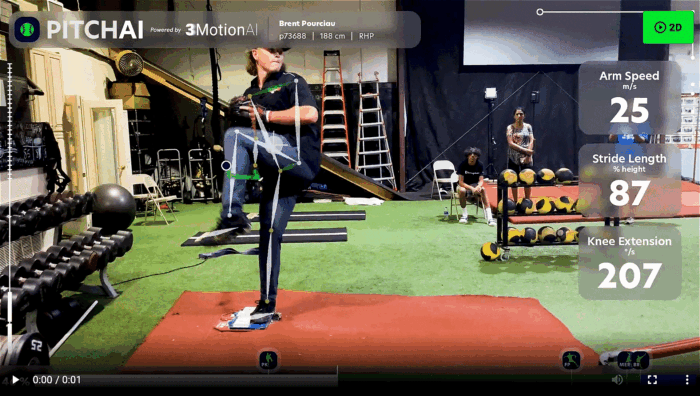
Before You Follow these Pro Pitching Tips Try This First
 First, practice changing the grip on your fastball as a pitcher. This will allow you to generate different types of pitches and make it harder for hitters to predict what's coming. Secondly, work on strengthening your kinetic chain through exercises such as throwing medicine balls or using resistance bands. Thirdly, practice baseball pitching from different distances to improve your accuracy and control. Finally, analyze videos of yourself pitching and see where you can improve in terms of stride length or arm angle in comparison to your shoulder line.
First, practice changing the grip on your fastball as a pitcher. This will allow you to generate different types of pitches and make it harder for hitters to predict what's coming. Secondly, work on strengthening your kinetic chain through exercises such as throwing medicine balls or using resistance bands. Thirdly, practice baseball pitching from different distances to improve your accuracy and control. Finally, analyze videos of yourself pitching and see where you can improve in terms of stride length or arm angle in comparison to your shoulder line.
10 Tips That Will Start You Towards Becoming a Pro Pitcher
By implementing these tips from professional pitchers, you can become a better pitcher and dominate on the mound.
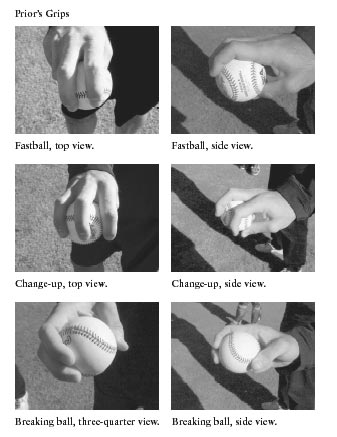
1. The importance of grip:
The grip on a baseball pitch is incredibly important. It determines how the ball will travel when you pitch it. There are a few different grips that successful pitchers use, but the most common grip is the four-seam fastball grip.
One pitcher recommends using a four-seam grip for fastballs and a two-seam grip for offspeed pitches and that was a pro pitcher. This can help with accuracy and control, as well as adding spin to the pitch. Experiment with your grip to find what works best for you.
To pitch a four-seam fastball pitch, put your thumb on top of the ball and your fingers underneath. Grip the ball tightly and make sure your arm is in the correct position. When you're ready to pitch, push off with your foot and stride forward. Pitch the ball toward the plate and release it when your hand is at the top of your baseball pitching motion.
2. Arm slot:
Your arm position can impact the trajectory and movement of your pitches as a pitcher. Keeping your elbow up, rather than dropping it down, can help you pitch with more speed and control.
 There are three arm slots: high, medium, and low. Each has its own benefits and drawbacks. High-arm slot pitchers have a good view of the plate and can generate
There are three arm slots: high, medium, and low. Each has its own benefits and drawbacks. High-arm slot pitchers have a good view of the plate and can generate
hard pitches that are difficult to hit. However, they have a shorter range of motion and can have trouble throwing breaking balls.
Medium arm slot pitchers have a good balance between the high and low arm angle. They can produce all types of pitches, but may not be able to pitch them as hard as high arm slot pitchers.
Low arm slot pitchers have the greatest range of motion, but their pitches are slower and easier to hit. They also tend to be more accurate than youth pitchers with other arm positions.
3. Stride length:
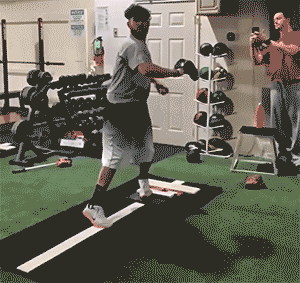 Most pitchers tend to focus on their grip and arm position when it comes to improving their baseball pitching skills, but one of the most important factors is stride length. A long stride can help you to pitch a harder fastball and make hitters swing and miss. It also can affect your fielding position.
Most pitchers tend to focus on their grip and arm position when it comes to improving their baseball pitching skills, but one of the most important factors is stride length. A long stride can help you to pitch a harder fastball and make hitters swing and miss. It also can affect your fielding position.
A longer stride can generate more power and more rotational force, but it's important to find the right balance between power and control. Practice pitching with different stride lengths until you find what works best for you.
There are a few things you can do to lengthen your stride and improve your baseball pitching skills. First, make sure you are taking a big step forward when you pitch. You should also try to land on the ball of your foot, rather than your heel. Finally, make sure you are pushing off the ground with your front foot as you pitch. This will help you to generate more power and increase your stride length as a pitcher.
4. Warm up properly:
 Before every practice or game a pitcher starts, make sure to warm up your muscles with stretches and light throwing. This will prevent injuries and help improve your performance.
Before every practice or game a pitcher starts, make sure to warm up your muscles with stretches and light throwing. This will prevent injuries and help improve your performance.
When you’re baseball pitching, the last thing you want is an injury. That’s why it’s important to warm up properly before you start throwing. Start by doing some light jogging or running in place to get your blood flowing. Then do a few jumping jacks or squats to get your muscles loose. Finally, do some arm circles and windmills to loosen up your shoulder muscles.
Once you’re done with your warm-up routine, it’s time to start throwing. Start by throwing short pitches at first, then gradually increase the distance as you warm up. Make sure to focus on your grip and arm position – they’re key factors in how well you pitch.
Finally, don’t forget to cool down after you finish. Do some more light running or jogging, and make sure to stretch out your muscles. This will help reduce the risk of injury and keep you
5. Practice regularly:
 The only way to truly improve your baseball pitching skills is to practice consistently and work on perfecting each aspect of your technique. Don't be afraid to ask for feedback from coaches and teammates, and never stop striving to improve.
The only way to truly improve your baseball pitching skills is to practice consistently and work on perfecting each aspect of your technique. Don't be afraid to ask for feedback from coaches and teammates, and never stop striving to improve.
Practice makes perfect, and this is especially true when it comes to baseball pitching. If you want to improve your baseball pitching skills, you need to practice regularly. This may mean pitching in your backyard or at a local park. It also means attending the 3X Pitching Velocity Camp or starting the 3X Pitching Velocity Program. No matter how you choose to practice, make sure you do it often so you can improve your fastball speed and accuracy.
In addition to regular practice, ask for feedback from coaches and teammates. They can offer valuable insight into what areas you need to work on and how to improve them. And never stop striving to improve – constantly push yourself to be the best pitcher you can be. With hard work and commitment, your baseball pitching skills will surely improve.
6. Stay focused on the batter:
 When you're pitching, it's important to stay focused on the batter. Don't get distracted by what's going on in the field or behind you. Keep your eyes on the hitter and make sure you're ready to produce your next pitch.
When you're pitching, it's important to stay focused on the batter. Don't get distracted by what's going on in the field or behind you. Keep your eyes on the hitter and make sure you're ready to produce your next pitch.
This may seem like common sense, but it's actually very easy to get distracted when you're pitching. You might start paying attention to the runners on base or the scoreboard, and before you know it, you've lost focus on the batter.
That's why it's important to stay focused on the hitter at all times. Keep your eyes on them, and make sure you're ready to bring your next pitch. This will help you stay in control and avoid costly mistakes.
7. Use of a variety of pitches:
Don't rely too heavily on one type of pitch. A good pitcher has a variety of pitches at their disposal and knows how to use them effectively against different batters. Mix up your pitches to keep the batter off balance and guess what's coming next.
 A good pitcher should be able to pitch a fastball, breaking balls, slider, and change-up with accuracy and speed. When you're facing a batter, mix up your pitches to keep them guessing. Throw a fastball, breaking balls, slider, and change-up in different combinations to keep them off balance. Don't rely too heavily on one type of pitch – you need to be able to throw them all effectively if you want to be successful.
A good pitcher should be able to pitch a fastball, breaking balls, slider, and change-up with accuracy and speed. When you're facing a batter, mix up your pitches to keep them guessing. Throw a fastball, breaking balls, slider, and change-up in different combinations to keep them off balance. Don't rely too heavily on one type of pitch – you need to be able to throw them all effectively if you want to be successful.
If you're having trouble throwing certain pitches, practice them often. The more you practice, the better you'll become at throwing them. Remember to focus on your grip and arm position with your upper body – they're key factors in how well your pitches are received. With hard work and practice, you'll be able to produce any type of pitch with accuracy and speed.
8. Control your emotions:
 Pitching is a very emotional sport, but it's important to stay in control of your emotions while you're pitching. Get angry if you want, but don't let that anger overtake you and affect your performance. The same goes for frustration – try not to dwell on past mistakes, but learn from them and move on.
Pitching is a very emotional sport, but it's important to stay in control of your emotions while you're pitching. Get angry if you want, but don't let that anger overtake you and affect your performance. The same goes for frustration – try not to dwell on past mistakes, but learn from them and move on.
When you're pitching, it's important to stay calm. You can be mad or frustrated, but don't let that stop you from doing your best. Just remember to learn from your mistakes and keep moving forward.
9. Stay hydrated:
 One of the most important things for a pitcher is staying hydrated during youth league baseball and practices. Dehydration can lead to fatigue, which will affect your performance. Drink plenty of water before, during, and after games and practices. If you don't drink enough, you might get dehydrated, which can make you feel tired and affect your pitching mechanics. Make sure you bring a water bottle with you to the game and drink from it often.
One of the most important things for a pitcher is staying hydrated during youth league baseball and practices. Dehydration can lead to fatigue, which will affect your performance. Drink plenty of water before, during, and after games and practices. If you don't drink enough, you might get dehydrated, which can make you feel tired and affect your pitching mechanics. Make sure you bring a water bottle with you to the game and drink from it often.
Hydration is more than just drinking water. To learn more about proper hydrating and nutrition of the pros check out the TopVelocity Nutritional Program.
10. Have a positive attitude:
 Having a positive attitude can go a long way in improving your pitching mechanics. Believe in yourself and focus on the positives, rather than dwelling on any negative aspects of your performance. Remember to have fun and enjoy the game – it will make you a better player overall.
Having a positive attitude can go a long way in improving your pitching mechanics. Believe in yourself and focus on the positives, rather than dwelling on any negative aspects of your performance. Remember to have fun and enjoy the game – it will make you a better player overall.
When pitching, it is important to stay positive. If you get down on yourself, it will show in your pitches. You might start throwing slower or making mistakes. The other team will see this and take advantage of it. Instead, remember why you are out there pitching in the first place- to win! Picture yourself doing well and throwing strikes. This will help you to stay positive and do your best when it matters most.
By following these tips from pro pitchers, you can improve your baseball pitching skills and become a stronger player on the field. Keep practicing and don't be afraid to experiment with different techniques until you find what works best for you from other pitchers.
The Bonus Tips from Pro Pitchers
A bonus tip for most pitchers to get better is by using a medicine ball training. By using medicine ball training, it will help increase the ball speed and improve the accuracy of your pitches. It is also a great tool to improve your overall core strength and conditioning.
 The 3X Pitching Velocity program can help you to throw a harder fastball with its medicine ball routines and more. You'll learn about the importance of the kinetic chain, trunk position, and stride power. These tips will help you to make batters swing and miss.
The 3X Pitching Velocity program can help you to throw a harder fastball with its medicine ball routines and more. You'll learn about the importance of the kinetic chain, trunk position, and stride power. These tips will help you to make batters swing and miss.
If you're looking to improve your fastball speed as a pitcher, the 3X Velocity Camp is a great opportunity. The program is designed by pro pitchers and offers tips and techniques that will help you throw harder. You'll learn about grip, upper arm path, stride length, and more. These tips will help you to throw a harder fastball and make scouts have no choice but to notice your talent.
3X Pitching Mechanics That Have Developed Pro Pitchers
The basic 6 3X mechanics components teach proper mechanics that you will learn. This includes the lift leg momentum, the load position, triple extension separation, chest thrust external rotation, internal rotation pronation, and front leg 2X extension. There is much evidence in the program showing the link between these components and a pitcher's performance. For example, evidence has discovered the front leg and front knee extension of the follow-through are critical components of increasing speed. You will also learn where the front foot must land to optimize speed and arm health during the follow-through.
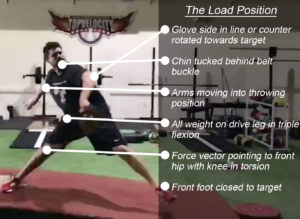
You want to throw harder and get batters out, but don't know where to start.
Learning how to pitch is a process that takes time and practice. You need the right instruction, drills, and feedback in order to improve.
The 3X Pitching Velocity program will help you achieve your goals as a pitcher. This online program includes video lessons from pro pitchers, drills and exercises, and a personalized pitching plan. It will teach you everything from a better leg lift to the ideal arm position as a pitcher. You'll also receive regular feedback from our experts so you can track your progress and stay on track. Start throwing harder today and pick a better leg lift!
What You Learned From The Pro Pitching Tips
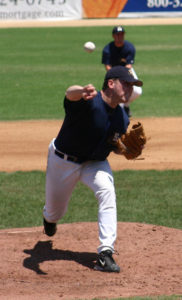 In order to improve your baseball pitching skills, it is important to focus on grip, arm position at ball release, stride length, and other factors. By practicing regularly and following these tips, you can throw a harder fastball and make batters swing and miss.
In order to improve your baseball pitching skills, it is important to focus on grip, arm position at ball release, stride length, and other factors. By practicing regularly and following these tips, you can throw a harder fastball and make batters swing and miss.
One tip from pro pitchers is to focus on your grip. Experiment with different grips for your fastball and off-speed pitches, such as a four-seam or two-seam grip. This can affect the movement and speed of the pitch, leading to more strikes and strikeouts.
Another crucial aspect is arm position at ball release. When pitching, make sure your elbow is at a 90-degree angle and that you are using your whole body to generate power, not just your arm.
In addition, pay attention to stride length. A longer stride can lead to more velocity on the pitch, but be careful not to overstride and lose control. This will also throw off your fielding position. Practice finding the right balance between power and control in your stride. These tips from professional baseball pitchers can greatly improve your baseball pitching skills. By focusing on grip, arm position, and stride length, you can throw harder and more accurately, leading to successful strikes and strikeouts.
Start implementing these tips in your practice sessions and soon enough, you'll see a difference in your performance, especially in your follow-through.
Why Your Need the Pitching Program of the Pros
 If you're looking to take your pitching mechanics to the next level, consider purchasing a subscription to Start Remote Training at www.topvelocity.net/patreon. This online training program offers tips and drills from pro starting pitchers and relief pitchers, as well as access to an interactive forum where you can ask questions and get feedback from most pitchers. With Start Remote Training, you'll have everything you need to improve your pitching and achieve your goals. It even has training for a catcher!
If you're looking to take your pitching mechanics to the next level, consider purchasing a subscription to Start Remote Training at www.topvelocity.net/patreon. This online training program offers tips and drills from pro starting pitchers and relief pitchers, as well as access to an interactive forum where you can ask questions and get feedback from most pitchers. With Start Remote Training, you'll have everything you need to improve your pitching and achieve your goals. It even has training for a catcher!
Some people say that this program helped them to throw their fastball harder by teaching them proper mechanics and more. They learned how to hold the ball, how to position their arm, and how to take bigger strides when they pitch. This made them into 90+mph elite pitchers. It can do the same for you! Sign up today to start developing what it takes to become a pro pitcher.
*Keywords that you may have searched to find this page are two pitchers, good pitchers, early acceleration, lower body, home plate, pitcher, catcher, line drive, late acceleration, point, plate, hit, batter, mound, pitcher's, leg, arms, thrown, shoulders, lead, elbow, fall, shoulder, stretch, business, success, catch, game, play, knee, forearm, injury, early, foot, windup, life, legs



